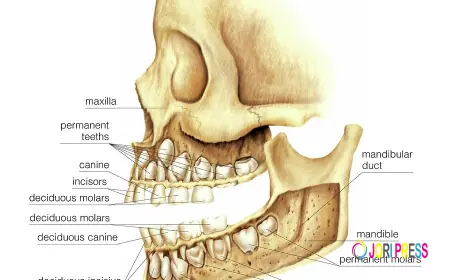Potential Risks and Complications of Beard Transplant Procedures in Islamabad
Explore potential risks of beard hair transplant in Islamabad. Learn about side effects, complications, and expert insights for safe results.

Beard transplant procedures have become increasingly popular among men looking to enhance facial aesthetics, fill patchy areas, or achieve a fuller, well-defined beard. While the results can be life-changing, patients must be aware that the procedure, like any medical or cosmetic surgery, carries certain risks and complications. This article offers a comprehensive overview of potential side effects, medical considerations, and preventive measures related to Beard hair transplant in Islamabad to help prospective patients make an informed decision.
Understanding the Beard Transplant Process
A beard transplant typically involves harvesting hair follicles from the back or sides of the scalp (the donor area) and transplanting them into the facial area. The two most commonly used techniques are:
-
FUE (Follicular Unit Extraction) – individual follicular units are extracted and implanted.
-
FUT (Follicular Unit Transplantation) – a strip of scalp is removed and dissected into individual grafts.
Each technique has its own set of benefits and potential drawbacks. However, regardless of the method used, patients may face certain complications during or after the procedure.
Common Post-Transplant Side Effects
While most side effects are temporary and manageable, some may lead to complications if not addressed early. Here's a breakdown:
1. Swelling and Redness
Most patients experience mild swelling and redness around the recipient and donor areas. This is a natural inflammatory response and typically resolves within a week.
2. Itching and Discomfort
Itching is common as the skin heals, but excessive scratching can damage the newly implanted grafts. Patients are advised to avoid touching the area unnecessarily.
3. Scabbing and Crusting
Small scabs may form around the transplanted hair follicles. These usually fall off within 7-10 days. Picking at them prematurely can disrupt graft survival.
Potential Risks and Complications
1. Infection
While rare, infections can occur if the surgical area is not kept clean or if aftercare instructions are not followed. Signs include:
-
Persistent redness or swelling
-
Pus or discharge from the transplant site
-
Fever or general discomfort
Timely antibiotic treatment usually resolves mild infections.
2. Folliculitis
This is an inflammation of the hair follicles that appears as red, pimple-like bumps. It may result from trapped bacteria or ingrown hairs. Warm compresses and medicated creams can help soothe the area.
3. Shock Loss
Some patients experience sudden shedding of native or transplanted hairs—a phenomenon known as shock loss. Although unsettling, this is generally temporary, and hair regrowth begins in a few months.
4. Scarring
In FUE procedures, tiny circular scars may remain in the donor area. In FUT, a linear scar is more likely. While most scars fade over time and can be hidden by surrounding hair, improper technique can lead to prominent scarring.
5. Uneven Beard Growth
If grafts are not implanted at the correct angle or density, it may result in an unnatural or patchy appearance. This highlights the importance of choosing an experienced surgeon.
Less Common But Serious Complications
1. Cysts
Cysts may develop when grafts are implanted too deeply or when hair grows inward. They usually resolve on their own but might need draining in severe cases.
2. Nerve Damage
Though rare, improper surgical technique could damage facial nerves, leading to numbness or tingling. This is typically temporary but can persist in some instances.
3. Allergic Reaction to Anesthesia
Allergic responses to local anesthesia can cause serious complications. That’s why a pre-procedure health assessment is essential.
4. Fistula Formation
Improper wound care or deep infections could result in the formation of a fistula—a small abnormal tunnel between the skin and deeper tissues. While rare, this condition requires prompt surgical correction.
Who Is Most at Risk?
Certain individuals may be more prone to complications:
-
Smokers – Delayed healing and poor blood circulation.
-
Diabetics – Higher risk of infections.
-
People with autoimmune disorders – Greater chances of graft rejection or poor healing.
-
Patients with unrealistic expectations – Dissatisfaction often stems from a mismatch between expectation and achievable outcomes.
Minimizing Risk Through Proper Clinic Selection
One of the most important decisions you can make is choosing a qualified and reputable clinic. An experienced surgeon will:
-
Conduct a detailed consultation
-
Review your medical history
-
Customize the procedure according to your facial structure and hair type
-
Offer clear aftercare guidelines
Clinics like Dynamic Aesthetic Clinic Islamabad are known for their expertise, sterile environments, and patient-centric approach to beard transplants.
Importance of Post-Surgical Aftercare
Following your surgeon’s aftercare instructions is vital in minimizing complications. Key aftercare tips include:
-
Keeping the transplant area clean and dry
-
Avoiding strenuous activity or sweating for at least a week
-
Not smoking or consuming alcohol during the recovery phase
-
Using prescribed medications, including antibiotics or anti-inflammatory drugs
When to Seek Medical Attention
You should immediately consult your surgeon if you notice:
-
Excessive swelling or bleeding
-
Severe pain or persistent redness
-
Discharge or pus from the transplant site
-
High fever or chills
Early intervention can prevent complications from worsening and protect the integrity of your grafts.
Is It Worth the Risk?
While there are risks involved, beard transplants are generally safe when performed by skilled professionals. The vast majority of patients enjoy successful outcomes with natural-looking beards. Proper planning, an experienced team, and diligent aftercare can significantly reduce complications.
Final Thoughts
A beard transplant can be a transformative experience, restoring confidence and enhancing facial features. However, understanding the potential risks and how to manage or avoid them is essential for a successful outcome. By choosing a certified clinic, following expert advice, and taking post-operative care seriously, you can minimize complications and enjoy lasting results.
What's Your Reaction?
 Like
0
Like
0
 Dislike
0
Dislike
0
 Love
0
Love
0
 Funny
0
Funny
0
 Angry
0
Angry
0
 Sad
0
Sad
0
 Wow
0
Wow
0

















































